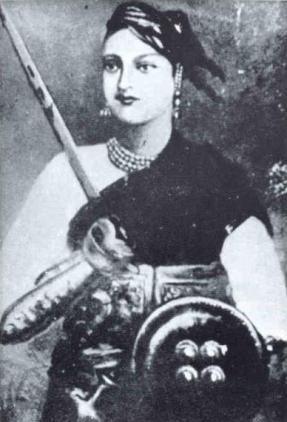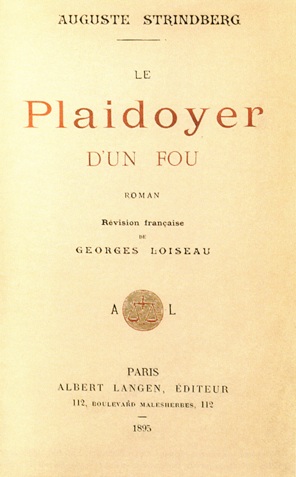Notes
- ↑ "'Your article on Hindi chauvinism had factual inaccuracies'". 25 September 2015.
- ↑ "Hindi novel's first cradle". The Tribune. 17 March 2005. Retrieved 20 July 2018.
Bhagyawati is an 1888 novel by Shardha Ram Phillauri. The book is now acknowledged as one of the first novels in Standard Hindi. [1] Previously, Lala Sri Niwas had written his Hindi novel Pariksha guru, which was published in 1882. Bhagyawati is believed to have been written mainly in Amritsar and was first published in 1888.
According to The Tribune (India), the novel was written specifically to "bring an awakening" amongst Indian women. [2] The book's main character was a woman, and it offered a progressive perspective on women's rights and status. At a time when widow remarriage were considered unholy and impure, child marriage was common, neglect of education, the novel advocated widow marriage, condemned child marriage, and affirmed the equality of male and female children. The book was often given to daughters at marriage as a part of the dowry.

Lakshmibai Newalkar, the Rani of Jhansi, was the Maharani consort of the princely state of Jhansi in the Maratha Empire from 1843 to 1853 by marriage to Maharaja Gangadhar Rao Newalkar. She was one of the leading figures in the Indian Rebellion of 1857, who became a national hero and symbol of resistance to the British rule in India for Indian nationalists.

Dhanpat Rai Srivastava, better known as Munshi Premchand based on his pen name Premchand, was an Indian writer famous for his modern Hindustani literature.

Kandukuri Veeresalingam was a social reformer and writer from the Madras Presidency, British India. He is considered as the father of the Telugu Renaissance movement. He was one of the early social reformers who encouraged the education of women and the remarriage of widows. He also fought against child marriage and the dowry system. He started a school in Dowlaiswaram in 1874, constructed the 'Brahmo Mandir' in 1887 and built the 'Hithakarini School' in 1908 in Andhra Pradesh. His novel Rajasekhara Charitramu is considered to be the first novel in Telugu literature.

Gaura Pant, better known as Shivani, was a Hindi writer of the 20th century and a pioneer in writing Indian women-centric fiction. She was awarded the Padma Shri for her contribution to Hindi literature in 1982.
Shardha Ram Phillauri was an Indian writer, poet and social reformer who is remembered for his contributions to Hindi and Punjabi literature. He is best known for his Hindu religious hymn Om Jai Jagdish Hare and Bhagyawati, one of the first novels in Hindi. Phillauri has also been called the "father of modern Punjabi prose." Born in Phillaur, he visited cities across Punjab and died in Lahore in 1881.

Sarah Grand was an English feminist writer active from 1873 to 1922. Her work revolved around the New Woman ideal.

Pandita Ramabai Sarasvati was an Indian social reformer and Christian missionary. She was the first woman to be awarded the titles of Pandita as a Sanskrit scholar and Sarasvati after being examined by the faculty of the University of Calcutta. She was one of the ten women delegates of the Congress session of 1889. During her stay in England in early 1880s she converted to Christianity. After that she toured extensively in the United States to collect funds for destitute Indian women. With the funds raised she started Sharada Sadan for child widows. In the late 1890s, she founded Mukti Mission, a Christian charity at Kedgaon village, forty miles east of the city of Pune. The mission was later named Pandita Ramabai Mukti Mission.

Alice Mona Alison Caird was an English novelist and essayist known for feminist writings, which were controversial when they were published. She also advocated for animal rights and civil liberties, and contributed to advancing the interests of the New Woman in the public sphere.

Krishna Sobti was an Indian Hindi-language fiction writer and essayist. She won the Sahitya Akademi Award in 1980 for her novel Zindaginama and in 1996, was awarded the Sahitya Akademi Fellowship, the highest award of the Akademi. In 2017, she received the Jnanpith Award for her contribution to Indian literature.

Fatma Aliye Topuz, often known simply as Fatma Aliye or Fatma Aliye Hanım, was a Turkish novelist, columnist, essayist, women's rights activist and humanitarian. Although there was an earlier published novel by the Turkish female author Zafer Hanım in 1877, since that one remained her only novel, Fatma Aliye Hanım with her five novels is credited by literary circles as the first female novelist in Turkish literature and the Islamic world.
Bazaar-e-Husn or Seva Sadan is a Hindustani novel by Munshi Premchand.

The Defence of a Fool is an autobiographical novel by the Swedish writer August Strindberg. The narrative is a lightly fictionalized account of his life from 1874 to 1887, and especially of his first marriage to Siri von Essen. The book was written in French in 1887-1888. It was first published in a German translation in 1893, and then in French as Le Plaidoyer d’un Fou in 1895. However, the French editor had made radical alterations to Strindberg’s text — how radical was not discovered until 1973, when the original manuscript, which had been considered lost, came to light. It was discovered in a safe in Oslo among papers belonging to Strindberg's friend, the Norwegian painter Edvard Munch. Based on it a new Swedish translation appeared in 1976. It has also been published in English as The Confession of a Fool, A Madman's Defence, A Fool's Apology and A Madman's Manifesto.

My Story is an autobiographical book written by Indian author and poet Kamala Das. The book was originally published in Malayalam, titled Ente Katha. The book evoked violent reactions of admiration and criticism among the readers and critics. It remains to date the best-selling woman's autobiography in India.

Seto Dharti is a Nepali novel written by Amar Neupane. It was published in 2012 by FinePrint Publication. It is the second novel of the author who previously penned a novel called Paniko Gham. It won the Madan Puraskar, the biggest literary award in Nepal.

Doctor Dolittle's Puddleby Adventures is a collection of short stories written and illustrated by Hugh Lofting, published posthumously as twelfth and last in the Doctor Dolittle series of children's fiction. The stories and illustrations were distributed during the 1920s by the Herald Tribune Syndicate and all may have been published in the New York Herald Tribune newspaper, among others. The 1952 collection was their first appearance in book form.

Madhur Kapila was an Indian novelist, journalist, art critic and a reviewer of Hindi literature.

Nirmala is a Hindi novel written by Indian writer Munshi Premchand. The melodramatic novel is centered on Nirmala, a young girl who was forced to marry a widower of her father's age. The plot unfolds to reveal her husband's suspicion of a relationship between her and his eldest son, a suspicion that leads to the son's death.

Helen Rose Hull was born in Albion, Michigan. She is remembered as a novelist, feminist, and English professor. Beginning her teaching career at Wellesley College and Barnard College, she went on to teach creative writing at the Ivy League institution, Columbia University for forty years with her lifelong partner, Mabel Louise Robinson.
Indira Bai is an Indian novel in the Kannada language written by Gulavadi Venkata Rao (1844–1913). Published in 1899, it is considered the first modern novel in Kannada. It dealt with the hitherto ostracized practice of widow remarriage. A social novel set in present-day coastal Karnataka, and allegedly based on real incidents, it portrays a society in transition. Supporting widow remarriage, it denounces social evils like corruption in the bureaucracy and the reactionary attitude of established religious institutions and takes a critical view of contemporary society.

Chokher Bali is a 1903 Bengali novel by Rabindranath Tagore that revolves around the central character Binodini and her relationships with three individuals. It explores the extramarital affair between Binodini, a young widow, and Mahendra, an old suitor of hers, the complicated friendship with Asha, Mahendra's wife, and her mutually conflicting feelings with Behari, Mahendra's childhood best friend. The novel also highlights issues of female literacy, child marriage, patriarchy within the family, and the fate of widows during that era.